Occupational environment monitoring at a camping tent manufacturing factory
99,000 ₫
Note: The above price is calculated for one sample, the price may vary depending on the area of the environment to be monitored and market fluctuations. For more accurate pricing support, please refer to the price list or contact our consulting staff directly.
Monitoring the environment of a camping tent manufacturing factory is a session of collecting, analyzing, and evaluating workplace factors that may be harmful to workers’ health.
Table of Contents
Toggle1. Overview of the Camping Tent Manufacturing Factory
a. What is a Camping Tent Manufacturing Factory?
Manufacturing factory of camping tents is a production facility specialized in manufacturing and processing camping tents. Camping tents are products used to provide temporary accommodation for camping, outdoor tourism, mountain climbing, or other events. Camping tent factories usually have the necessary equipment, machinery, and technology to produce tents according to requirements and quality standards.
Camping tent factories may use machinery and equipment such as automatic fabric cutters, industrial sewing machines, welding machines, heat presses, metal cutters, printing machines, packaging machines, etc., to increase production efficiency and quality.

b. Production stages in the camping tent manufacturing factory
In a camping tent factory, the production stages typically include:
- Design and development: The design team creates camping tent designs and prototypes based on customer requirements. This stage includes selecting the style, size, materials, and special features of the camping tent.
- Material preparation: Preparing the necessary materials for tent production, including waterproof fabric, structural frames, ropes, tarpaulins, accessories, etc.
- Fabric cutting and processing: Using fabric cutting machines and processing tools to cut and process fabrics according to required patterns and dimensions. This includes cutting main fabric panels and small components such as doors, windows, and flooring.
- Frame assembly: Assembling and attaching structural frames such as aluminum poles, fiberglass, or other materials to the cut fabric pieces. This stage ensures the stability and firmness of the camping tent.
- Attachment of accessories: Installing accessories such as zippers, hooks, ropes, tarpaulins, insect nets, etc., to increase convenience and usability. Accessories are usually attached to the fabric pieces and structural frames.
- Sewing: Using industrial sewing machines or hand stitching to sew the fabric pieces and frames together. Seams must ensure firmness and water resistance of the camping tent.
- Quality inspection: Conducting quality checks to ensure the camping tent meets safety, quality, and waterproof standards. Inspections may include checking fabric strength, water resistance, seam quality, and other technical requirements.

c. Types of machinery used in camping tent factories
Common machinery used in camping tent factories includes:
- Automatic fabric cutter: Used to cut fabric into panels of the required size and shape for camping tents.
- Industrial sewing machine: Used to sew fabric pieces together and attach accessories such as zippers, hooks, and Velcro strips.
- Heat welding machine: Used to seal seams and edges on the camping tent to enhance waterproofing.
- Metal cutting machine: Used to cut and process structural frame components such as aluminum and steel poles.
- Heat press: Used to join and bond fabric and accessories using heat and pressure.
- Printing machine: Used to print images, logos, or other information on the camping tent surface.
- Packaging machine: Automatic or semi-automatic machines used to package camping tents into product packs or boxes for shipping and storage.

d. Occupational diseases for workers in camping tent factories
Workers in camping tent factories may encounter the following occupational diseases:
- Respiratory diseases: Workers may be affected by dust and fumes from synthetic fibers, chemicals, or additives during tent production. This can lead to pneumonia, bronchitis, asthma, or breathing difficulties.
- Skin diseases: Exposure to chemicals or irritating materials may cause dermatitis, itching, dry skin, or infections.
- Hearing-related diseases: Noise in the camping tent manufacturing environment may cause hearing loss or other ear-related issues.
- Spinal and musculoskeletal issues: Prolonged work in uncomfortable positions can lead to spine, muscle, and skeletal problems due to repeated movements or poor ergonomics.
- Hand and wrist issues: Repetitive tasks or working in uncomfortable positions may cause hand and wrist problems such as musculoskeletal inflammation, tendonitis, or carpal tunnel syndrome.

e. Popular camping tent types on the market
Popular camping tent types include:
- Hut-style camping tent: Shaped like a hut, usually with one or more doors and windows for ventilation. Easy to set up and suitable for short camping trips or natural tourism.
- A-frame house tent: Shaped like a house with two wind-resistant peaks. Spacious and sturdy, suitable for long camping trips or as a fixed base at a campsite.
- Dome tent: Dome-shaped with structural supports for stability. Better wind resistance, suitable for harsh weather conditions.
- Pop-up/movable house tent: Foldable frame for easy carrying and assembly. Lightweight and convenient for travelers or highway camping trips.
- Cabin tent: Large size with spacious interior, often with separate sleeping areas, living room, and storage space, like a small mobile house.
- Hanging tent: Designed to be hung from trees or similar structures, allowing users to rest above ground while enjoying the surroundings.
- Standard camping tent: Compact and suitable for short trips or quick setups.
2. Overview of Occupational Environment Monitoring Services
a. What is occupational environment monitoring at a camping tent factory?
Occupational environment monitoring (or workplace environmental measurement) at a camping tent factory involves collecting, evaluating, and analyzing measurements of workplace environmental factors to implement timely measures, minimize environmental hazards to workers’ health, and prevent occupational diseases. Environment monitoring is mandatory for camping tent factories.
Workplace environment monitoring plays a critical role in protecting and enhancing workers’ health, as the workforce is the main asset of a business and directly generates profit. Workers exposed to hazards exceeding permissible limits may suffer health impacts and occupational diseases.
REGISTER OCCUPATIONAL ENVIRONMENT MONITORING SERVICE
b. Nam Viet occupational environment monitoring program
Nam Viet’s occupational environment monitoring program is developed by engineers specializing in labor safety and environmental protection. To ensure worker safety and health, the program uses modern measurement methods to monitor air, water, microclimate, physical, and dust factors in the workplace. This program is crucial for maintaining a safe work environment and protecting worker health.
Additionally, Nam Viet’s program plays an important role in researching and developing new solutions to improve workplace environmental quality. With a dedicated and professional monitoring team, Nam Viet’s exclusive program is a breakthrough in labor safety management and environmental protection in Vietnam.

c. Standardization in occupational environment measurement procedures
Standardization in Nam Viet’s measurement procedures ensures accuracy and reliability. The program follows standards and procedures recognized by Ho Chi Minh City Department of Health, ensuring high reliability of collected data for evaluating the work environment and making decisions to protect worker health.
These standardized procedures also guarantee that measurements are conducted by highly qualified monitoring specialists with years of experience, allowing managers and experts to trust results from An Toan Nam Viet for accurate, valuable decisions in worker health and environmental protection.
By applying standardization, Nam Viet demonstrates commitment to safe workplaces and contributes to improving labor safety and environmental management in Vietnam.
d. Reporting results of camping tent factory monitoring
Monitoring results are prepared according to Form 04, Appendix III issued with Decree 44/2016/ND-CP and made in two copies: one sent to the factory contracting the monitoring, and one retained by the monitoring organization.
Retention time for monitoring results is indefinite, as prescribed by law.

e. Frequency of occupational environment monitoring as per law
According to Clause 2, Article 18, Law on Occupational Safety and Health 84/2015/QH13, employers must organize monitoring of harmful factors at least once a year.
f. Deadline for submitting occupational environment monitoring reports
Reports must be submitted before December 31 annually. Factories are required to submit results to the local Department of Health at the location of their headquarters and where employees work.
When there are changes in technology, production processes, or facility upgrades that may introduce new hazards, factories must update occupational hygiene records regarding harmful factors to be monitored.
g. Penalties for violations of occupational environment monitoring for employers
According to Article 27, Decree 12/2022/ND-CP dated January 17, 2022, on administrative penalties in labor, social insurance, and Vietnamese workers working abroad under contract:
- Clause 2: Fine from 2,000,000 to 5,000,000 VND for not publicly notifying employees at the monitoring site and workplace about monitoring results and hazard assessments immediately.
- Clause 3: Fine from 20,000,000 to 40,000,000 VND for failing to perform monitoring to control health hazards as per the law.
- Clause 4: Fine from 40,000,000 to 60,000,000 VND for collaborating with monitoring organizations to commit fraud during monitoring, without criminal liability.
3. Harmful Environmental Factors for Workers in Camping Tent Manufacturing Factories
Workers in camping tent manufacturing factories may encounter the following harmful environmental factors:
- Dust and chemical fumes: The production process of camping tents can generate dust from cutting, polishing, or processing materials such as synthetic fibers, fabrics, or waterproof materials. Additionally, the use of chemicals during production can produce toxic fumes. Long-term exposure to this dust and fumes can cause respiratory irritation, pneumonia, or other respiratory health issues.
- Noise: Machinery and tools in camping tent factories can produce high noise levels. Continuous and high-intensity noise can cause stress, affect hearing, disrupt sleep, increase the risk of workplace accidents, and cause psychological strain.
- Temperature and humidity: The working environment in camping tent factories may experience fluctuating temperature and humidity. This can cause heat stress, fatigue, and affect workers’ health and performance.
- Chemicals: During camping tent production, chemicals such as adhesives, flame retardants, dyes, and cleaning agents may be used. Exposure to these chemicals can cause skin irritation, dermatitis, allergies, or damage to the nervous system.
- Irritating materials: Using materials such as synthetic fibers, plastics, rubber, or waterproof fabrics can cause skin and eye irritation or other workplace-related problems.
REGISTER FOR OCCUPATIONAL ENVIRONMENT MONITORING SERVICE
4. Measures to Improve the Working Environment in Camping Tent Manufacturing Factories
To improve the working environment in camping tent factories and protect workers’ health, the following measures can be applied:
- Ensure good ventilation: Provide an efficient ventilation system in the factory to reduce the accumulation of dust and toxic fumes in the air. This can be achieved by improving natural ventilation or using mechanical ventilation systems.
- Control dust and chemicals: Implement measures to control and minimize dust and chemical exposure during production. This includes using dust extraction equipment, exhaust fans, and air treatment systems to prevent the spread of dust and toxic fumes into the workspace.
- Ensure electrical safety: Ensure that electrical systems and equipment are regularly inspected and maintained to prevent risks of short circuits and fire hazards.
- Provide protective equipment: Ensure that workers are supplied with personal protective equipment such as masks, safety goggles, helmets, gloves, and appropriate clothing to protect against dust, chemicals, and other physical hazards.
- Training and education: Provide training and education for workers on occupational safety, correct use of protective equipment, and safe work procedures. This helps increase awareness and understanding of risks and preventive measures.
- Periodic inspection and measurement: Conduct regular checks on air quality, noise levels, and other environmental factors in the factory to ensure compliance with safety regulations and protect workers’ health.
- Periodically conduct occupational environment monitoring in factories, collect and analyze harmful factors affecting workers, and adjust to reduce risks to prevent occupational diseases.
5. Benefits of Periodic Monitoring of Camping Tent Factories
An Toan Nam Viet provides enterprises with great benefits when using occupational environment monitoring services in accordance with Decree 44/2016/ND-CP on managing and controlling harmful factors in the working environment affecting workers.
- Enterprises can proactively control harmful factors in their workshops or factories.
- Receive advice and recommendations on measures to minimize harmful factors and improve the quality of the working environment.
- Indirectly protect human resources, the key factor in enterprise development.
- Reduce the impact of occupational diseases on human health, thereby minimizing future treatment costs.
- Improved worker health leads to consistent product quality and production output.
- Ensure compliance with occupational safety laws, avoiding legal risks.
- Enhance credibility and professionalism in all aspects, thereby elevating the enterprise’s brand value.
Nam Viet’s occupational environment monitoring service is a solution to reduce the impact of occupational diseases, contributing to a clean and high-quality working environment.

6. National Occupational Environment Monitoring Center
Occupational Environment Monitoring Center of Nam Viet is a professional unit specializing in monitoring and measuring the quality of the working environment across all provinces in Vietnam. With an experienced team of monitoring specialists, the center uses modern measurement equipment ensuring accuracy and reliability.
In addition to providing monitoring services, the center also assists clients in planning, handling, and following up on occupational environment issues. With the motto “customer-centered,” the center focuses on client satisfaction, meets all client needs, and is committed to offering the best solutions for enterprises.
REGISTER FOR OCCUPATIONAL ENVIRONMENT MONITORING SERVICE
With investments in technology, equipment, and human resources, Nam Viet’s monitoring center has become one of the most reputable units in the field of occupational environment monitoring in Ho Chi Minh City, with the following goals:
- We always value our brand reputation and the quality of our service products.
- We provide customers with the best and most suitable services possible.
- Alongside our team of experienced Masters and Engineers with expertise, aiming to protect the environment and benefit enterprises.
- By choosing Nam Viet Environmental Monitoring team, your company will receive professional service from experts in the monitoring field and enjoy the best cost advantages.
The occupational environment monitoring process at Nam Viet includes the following basic steps:
- Before conducting occupational environment monitoring, our company ensures that machinery and equipment for monitoring are calibrated according to legal regulations.
- Implement the occupational environment monitoring procedures as committed to the Department of Health.
- Honestly report occupational environment monitoring results to the employer.
- If the monitoring results indicate unsafe conditions for workers, Nam Viet will support by providing corrective solutions, and the workplace will implement as follows:
- Implement measures to improve working conditions to minimize the impact of harmful factors and prevent occupational diseases.
- Organize health examinations to detect occupational and related diseases early for workers in unsafe environments.
- Provide in-kind benefits to workers in accordance with labor law regulations.

7. Occupational Environment Monitoring Price Quote
To help enterprises conduct occupational environment monitoring professionally and effectively, Nam Viet provides clients with a price list for occupational environment monitoring services with high quality and reasonable costs.
- Our price list provides detailed information about the costs of the monitoring services we offer, including expenses for travel, measurement, analysis, and reporting results. Clients can fully trust the accuracy and reliability of the monitoring reports we provide.
- We are committed to offering the most competitive and reasonable prices on the market and are always ready to provide quick and professional consultation for any questions about monitoring services.
- With Nam Viet’s price list, clients can easily select service packages suitable for their needs. We are committed to delivering the highest client satisfaction with professional service quality.
No comments yet

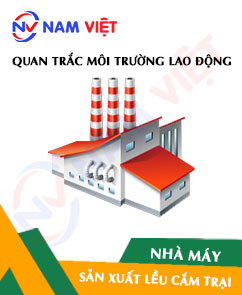
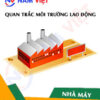
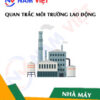
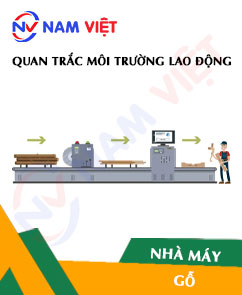

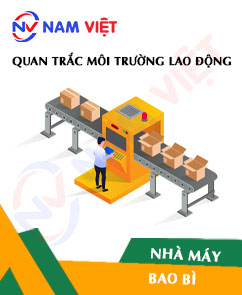
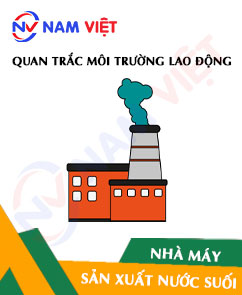



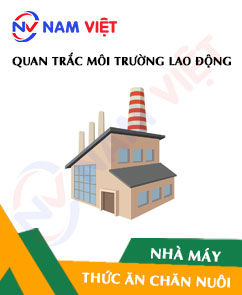
Review Occupational environment monitoring at a camping tent manufacturing factory
There are no reviews yet.